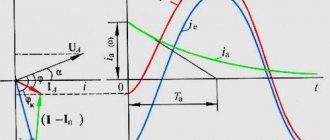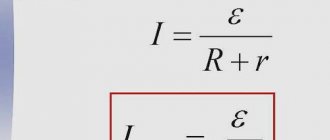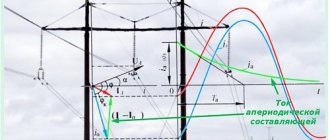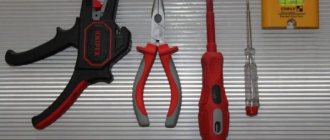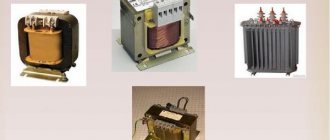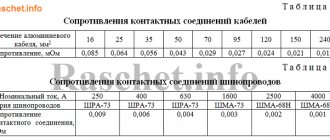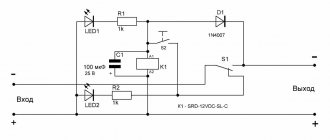In this material we will look at why short circuit current indicators are needed, on what principle they work and how their use helps power engineers save money and time!
Today in the Russian energy sector there is a clear imbalance in the financing and maintenance of distribution networks of various power levels. Electricity generation sources, as well as high-power distribution networks, have priority in subsidies.
Electrical networks of the middle voltage class (power 6 - 35 kV) are the most worn out; equipment and power lines are sometimes decades old. Under such conditions, the number of power line accidents due to the influence of unfavorable environmental conditions increases significantly. The greatest number of breaks occur during icing. Fallen tree branches can tangle wires, causing a short circuit. Insulator breakdowns and other causes of short circuits make the work of engineers and fitters servicing these lines very difficult.
Most often, there are no instruments for monitoring power lines, and the location of the fault has to be determined visually, which is time-consuming and leads to a long power outage. In this regard, there is a need to use special equipment that can detect breaks and short circuits on the line, as well as indicate the location of the accident.
Short circuit indicators: how to look for damage to overhead lines in Russia
An increase in the number of weather anomalies and limited funding are forcing us to expand the use of modern equipment. Let's look at popular devices available in Russia: short circuit indicators (SCI) for overhead power lines.
Devices for indicating overhead line damage may have different designs, but they all perform one main task - saving money and time, as we talked about earlier. In the event of an accident on the line, it is necessary to carry out a detour with a visual inspection of the wires, usually in conditions of bad roads and precipitation. Short circuit indicators (SCIs) make this job easier. The Russian market includes IKZ from leading international companies, as well as domestic manufacturers. Each brand has its own characteristics that may be useful in different conditions.
Some brands on the Russian market
The German company Horstmann GmbH is one of the leaders in the development of complex systems for indicating faults in overhead lines. The brand produces all major types of ICP for different amperages, including visual indicators mounted on wires, as well as remote monitoring systems.
"ANTRAX" . This is a Russian full-cycle research and production company with more than 20 years of experience. The largest domestic supplier of IKZ. The company has a patented technology for detecting power line faults. "Antraks" produces all main types of IKZ, which, among other things, are sold abroad.
Amast Power Lines is a Russian engineering company whose product line includes modern ICP. The company has a large market share due to the provision of turnkey solutions.
The Russian one occupies a significant share of the domestic IKZ market and is one of the oldest players. The company produces modern indicators that can be integrated into geographic information systems for managing energy networks.
The Norwegian company Nortroll is one of the oldest European manufacturers of energy equipment. Nortroll has a line of IKZs - these are modern programmable devices with advanced functionality.
The ASTRON design bureau is known in Russia for the development of thermal imagers for military and civilian use. Also in 2008, the company developed its first proprietary IKZ, adapted for Russian overhead power lines.
Basic IKZ for installation on wires
The most affordable and easy to install indicators that can be seen during a power line inspection. They are a small device that is attached to a wire or other line element and reports a short circuit using a color or light signal.
The list of solutions from Horstmann includes the simplest ICPs that can be mounted on wires and busbars. The rotary IKZ is equipped with a spring, which, when a short circuit current flows, moves the indicator flag, painted on one side in a bright color. Operation threshold from 150 A.
Horstmann Rotor System in short circuit position
The advantage of such an IKZ is reliability, but after operation it must be manually cocked again. Liquid IKZ does not have this drawback, since the indicator is colored under the influence of the short-circuit magnetic field and becomes transparent again a few hours after the problem is eliminated.
Horstmann Fluid System in standby (left) and trigger position
We have a line of IKZs that are mounted on wires, as well as a small family of devices for mounting on power line supports. Unlike liquid and rotary IKZ from Horstmann, the simplest IKZ-B31 from Antraks is equipped with LEDs, which in the daytime are visible from a distance of up to 100 m with the naked eye (without binoculars). At the same time, different LED blinking algorithms make it possible to determine the type of power line damage from afar. Power is supplied by a lithium battery with a 10-year standby life.
IKZ-V31 for networks 6-35 kV
The IKZ-V31 has a lower response threshold than the rotary and liquid Horstmann IKZs, but the design of the latter is much simpler, and therefore potentially more reliable and durable.
IKZ "Antraks" for poles has a simpler mounting design and a set of reflective flags, which are clearly visible at night in the light of a lantern.
IKZ "Antraks" for pole mounting
The simplest IKZ from this line, IKZ-V1, has a mechanical indication and a reliable design with capacitive power supply from the mains. It does not have a battery or any wireless communication devices.
Nortroll's simplest solution is the Line Troll 110Eμ indicator, which can detect phase-to-phase short circuits and single-phase ground faults.
Line Troll 110Eμ for networks 6—69 kV
A special feature of the indicator is the presence of microswitches that allow you to program response parameters. The IKZ can detect intermittent short circuits, reporting this by flashing a green indicator for 24 hours.
The IKZ returns to standby mode automatically: according to time or after normal supply of current to the network. The lifespan of a lithium battery is 9-10 years.
Line Troll 110Eμ can be used on lines with a grounded neutral. It is not suitable for multi-feed lines and ring lines.
The principle of installing indicators on different overhead lines
How often should short circuit indicators be hung and at what distance from each other? There are no strict rules or restrictions here.
Manufacturers' recommendation is every 1.5-2 km on straight sections.
There is one more feature for main overhead lines that needs to be taken into account.
Very often the line first goes along the knurled road, and then sharply goes away from it. So, in order not to go around this “nook” during inspection and not waste precious time, install one IKZ before the overhead line turns, and the other at the power line exit back to the road.
When you find the short circuit and both indicators are triggered, you will know for sure that there is no need to inspect this “tail”.
The same applies to the places where the overhead line transitions into a cable line (at the intersection with a railway, another overhead line or roadway).
One IKZ is placed at the input of the cable line, the other at the output.
If the first one worked and the second one did not, then the damage occurred in the cable itself. Call the laboratory, burn it and search in it, the air line is not to blame.
Regarding the taps. As a rule, three sets are mounted on each tap. On the main overhead line, 2 pieces (before and after the tap) and one set in the first tap span.
You must clearly understand where the short circuit current went.
Advanced IKZ with the ability to connect to monitoring networks
Horstmann's most advanced ICDs for wires are the Navigator line of indicators. This indicator signals a malfunction using LEDs that are clearly visible from afar, especially at night.
Horstmann Navigator-LM (A) for overhead lines
Like other IKZ, Navigator can be attached to a wire using a special rod without disconnecting the voltage. At the same time, the IKZ mount is reliable enough to withstand winds of up to 200 km/h. A distinctive feature of the indicators is the ability to be used on lines up to 220 kV (Smart Navigator 2.0 HV).
The indicator can store line load data for the last 72 hours, which reduces the risk of false alarms in networks where there are large load fluctuations. Automatic alarm reset can be configured over a wide range from 4 hours to a week. Navigator indicators with the prefix Smart in the name can be part of a remote monitoring system with data transmission via GSM networks.
IKZ "Antraks" for mounting on a wire
IKZ with index “L” can be used for remote detection of short circuits. For example, the IKZ-V34L indicator can communicate with the field team terminal via a direct Bluetooth channel at a short distance or with a remote power system control center via GSM.
The ASTRON design bureau offers the ASTRON-8080 UHL1 indicator for 6-35 kV lines. It detects phase-to-phase short circuits by measuring electromagnetic induction during current surges in the damaged phases.
ASTRON-8080 UHL1
A special feature of the indicator is its ability to register low currents from 4 A, which is important in Russian networks. The IKZ has a very durable polycarbonate body that is UV resistant. ASTRON-8080 is equipped with bright LEDs for indication, as well as GPS and GSM modules. The latter allow indicators to be integrated into an extensive monitoring network. If triggered, the operator immediately receives an SMS with the coordinates of the event. Data can also be sent to the network control center computer. The battery life is 7 years in standby mode, the total service life of the device is 15 years.
The Nortroll product line includes the LineTroll r400D indicator for mounting on a power line pole with a voltage of 6-69 kV. It is capable of detecting single-phase earth faults in the range of 0.5-60 A. The low trip threshold is often especially useful in Russian conditions. The indicator is also capable of detecting a phase-to-phase short circuit of 50-1000 A. The LED indication can display stable and unstable line faults, and special lenses can direct the light in the desired direction. Battery life is 8 years in standby mode.
LineTroll r400D
LineTroll r400D is a smart device with GPS and GSM modules, as well as the ability to tune in at close range via a 2.4 GHz radio channel. The IKZ has a fault counter, can be connected remotely to the control panel, and can be configured via SMS from a mobile phone.
Reset indication
Once the trigger has occurred, there are several ways to clear the indication. First, manually - using a barbell and a magnet.
You touch one of the sides of the case with a magnet and the previous state of the IKZ is reset.
With the same magnet, smart IKZ (we will consider them further) are registered in the data collection unit. Only the time of application of the magnet to the case here should be about 10 seconds, until the yellow LED inside blinks.
Please note that to force manual operation, the magnet must be applied to one side, and to reset - to the other!
The second reset method is automatic, time-based. It is designed for 2,4,8 or 24 hours (4 hours standard, the rest on request).
The third is when restoring the rated voltage in the line or rated current.
In some models, yellow LEDs light up after automatic reclosure.
In this case, one minute after successful automatic restart, the device analyzes the current.
If it is normal, the red LEDs go out and the yellow ones begin to blink within 4 hours. Having then walked along the line, you will be able to determine where the self-removed short circuit was.
If the circuit is stable, both LEDs will light until reset.
Comprehensive solutions for monitoring ICH
There is only one IKZ - LED overhead line damage indicator (IPL). This device has a number of features: a stainless steel case that can withstand a drop from a height of 10 m. The battery has an extended service life of up to 8 years in standby mode. The operating range is from 100 A to 650 A in 10 A increments. The indicator is able to distinguish between a short circuit or a single-phase ground fault on 6-35 kV lines.
IPVL has a 433 MHz radio transmitter for communication with the control panel at a distance of up to 25 m, as well as a GSM module. The indicator can be integrated into the geographic information system of OMP overhead lines using transmitters powered by solar panels.
IPVL from "Relematika"
The IPVL registers a fault, the transmitter relays the indicator readings via the GSM network to the control center, where the location and nature of the fault is displayed on a digital map. At the same time, SMS and emails are sent to staff. Having a comprehensive solution is an advantage when an enterprise intends to deploy a large-scale monitoring network.
Amast Power Lines has only one APL-IKZ indicator for 6-35 kV lines, but with the help of special software the IKZ operating parameters can be adjusted within a wide range. The indicator can detect three-phase, two-phase faults, as well as single-phase ground faults with low currents from 0.5 A.
Setting up APL-IKZ requires qualifications, but the indicators can act as sensors for a large-scale monitoring system for overhead power lines. The developer offers a comprehensive solution: power transmission line supports with installed IKZ and telemetric devices for automated control and electricity metering systems.
APL-IKZ
In addition to remote monitoring, APL-IKZ can provide fault prediction using machine analysis of data collected over a year or two of power line measurements.
IKZ Led + rotary mechanism
Another type of indicator is Navigator Led+Flag.
Again, it does not have a data transfer function.
Specifications
In addition to the above structural elements, it has a rotating flag in the lower hemisphere. LED indication is also available.
The LEDs reset is programmed for 4 hours, while the flag can restore its original position for much longer - 1,2 or 7 days.
Triggering occurs according to the time-current characteristic depending on the model:
- 100A/200ms
- 100A/100ms
- 200A/100ms
- 50A/100ms
Such things need to be installed in hard-to-reach points, where getting to the site of damage takes more than a day, and the power supply to the facility is transferred to a backup overhead line.
The main advantage of this model is battery saving. The flag turned and the lights went out after 4 hours.
We reached the support on the 2nd or 3rd day and found out all the information.
How to choose the most suitable solution
The technical characteristics of modern IKZ are similar; devices from well-known brands have good build quality and technical support. All use isolated magnetic sensors to detect short circuits and can be mounted on live wires.
The choice must be made based on local conditions, price and subsequent plans for expanding the monitoring system towards more effective remote integrated solutions.
In particular, in Russia, most overhead power lines from 6 kV to 35 kV have an insulated neutral. As a result, such lines have lower single-phase short circuit currents to ground. Abroad, the currents are higher, since the neutral is grounded. Russian-made IKZ takes this feature into account and can be more effective in detecting such frequently occurring short circuits.
Simple IKZ solve most problems, but in some cases it is more advisable to purchase advanced IKZ with additional functions. Such indicators can be connected to a remote monitoring system and minimize the work time of the field team, since the location of the accident will be precisely known. Also, such IKZ are capable of recording intermittent failures, for example, associated with an increase in voltage between phase and ground due to a ground fault. In the case of long power lines in difficult terrain, advanced IKZ with connection to remote monitoring is the best choice.
When choosing indicators for power line supports that are easy to install and maintain, you should keep in mind that there are a number of restrictions on the installation location of such indicators. Thus, such indicators cannot be mounted next to a parallel line, on supports where the grounding passes between the phase wires and the indicator.
Where to install IKZ?
The general principle of placing IKZ is presented in the following figure.
We have a main supply substation, a 6-10 kV main line from it and taps to individual package transformer substations.
According to this scheme, smart indicators with a data transmission function are installed in balance demarcation zones or at control points of the main feeder.
They are more expensive and, accordingly, it is not at all necessary to hang them throughout the overhead lines. Knowing the end point of the operation, the dispatcher sends the crew not along the entire line from the very beginning, but precisely to this place.
Next, guided by simple IKZ (not “smart”), the fitters determine which direction to go and which tap to inspect.
If you have a simple overhead line without taps, then set the indicators in a row with a certain frequency. It all depends on the length.
